The Integrative Enneagram Questionnaire draws on the collective body of knowledge and experience from many pioneers in the Enneagram field and as the developers of the iEQ9 we would like to acknowledge the experts, philosophers and practitioners for their contribution to the development and application of the model as we understand it today.Dirk Cloete | Founder Integrative Enneagram Solutions
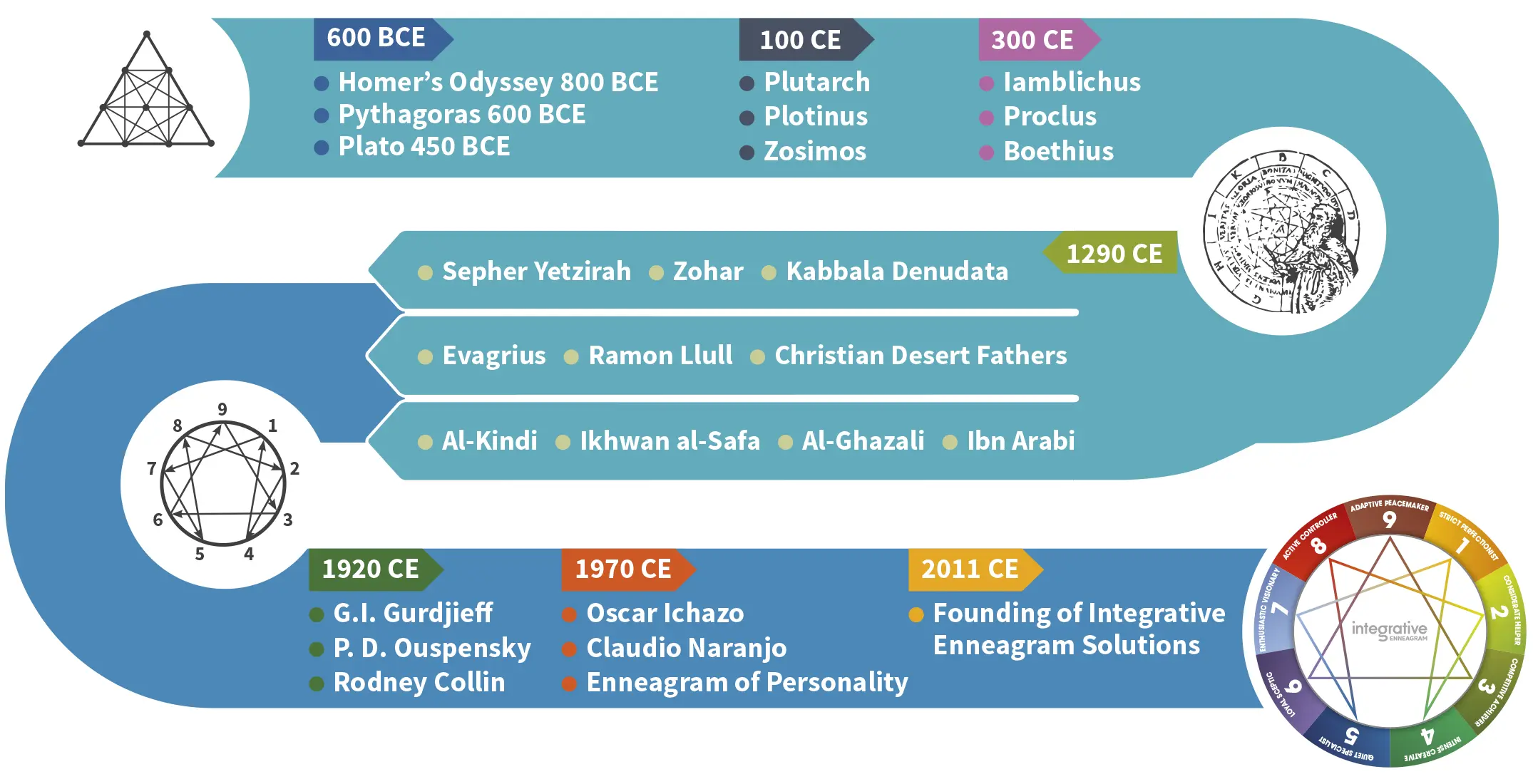
Also known as: Nine Personality Types, Enneagram Type, Nine Types, Personality Type.
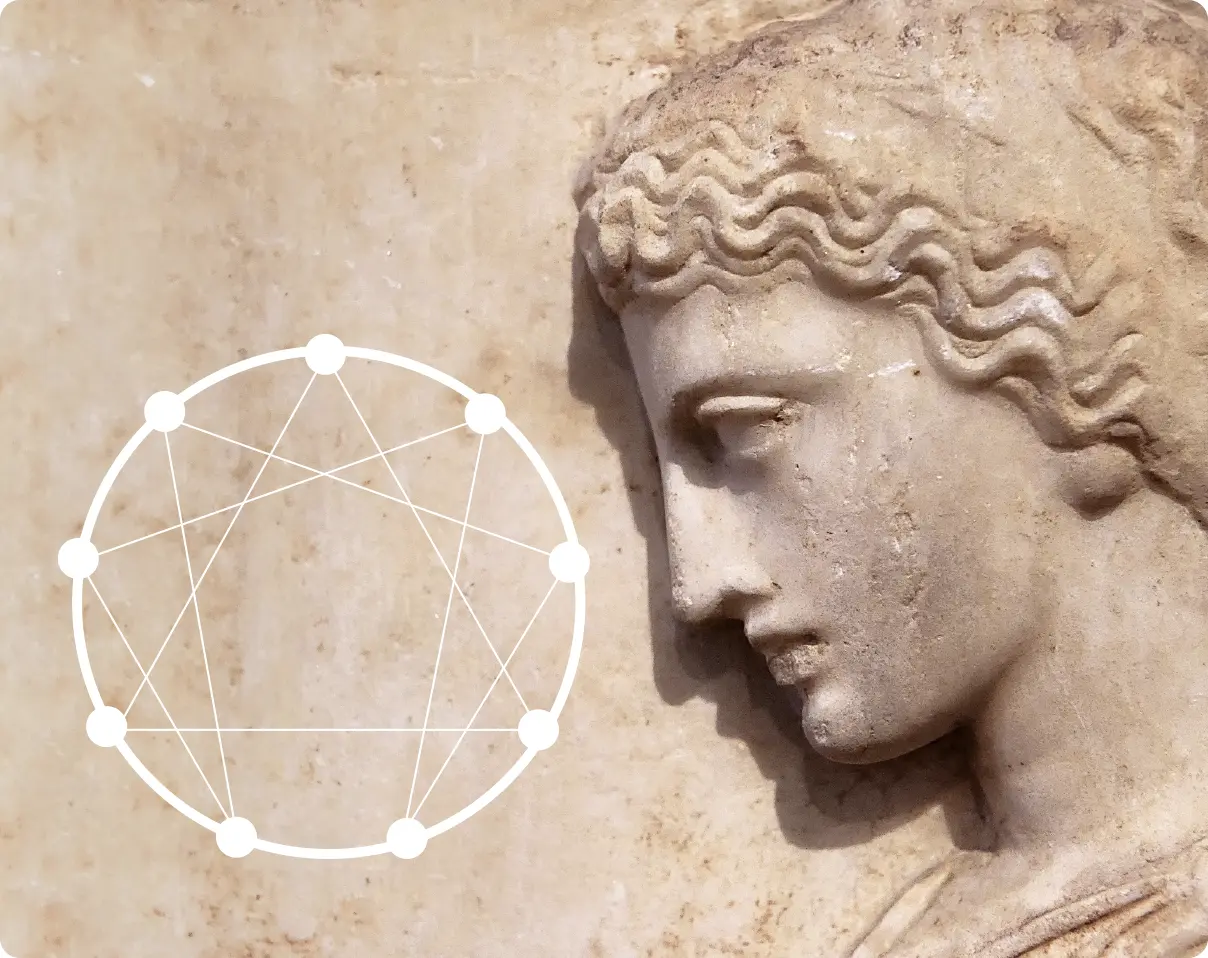
Although the exact details of the origin of the Enneagram remain steeped in mystery, all available evidence supports a long and complex history spanning both culture and space - with roots stemming from a variety of different mathematical, philosophical, and spiritual traditions.
The Enneagram framework as it appears in the modern world represents a synthesis of ancient wisdom and cutting-edge psychology. We attempt to honour the many great minds that helped create this powerful and revolutionary tool.
Greek Roots
The term "Enneagram" comes from the Greek words "ennéa" meaning "nine" and
"gramma" meaning "figure".
Ennea -> Nine
Gram -> Model / Points / That which is written or drawn
Some authors claim strong roots in the Sufi tradition. It should be noted, however, that it is definitely not common to all Sufi traditions. Others point to connections to early esoteric Christianity (Evagrius and other desert fathers).
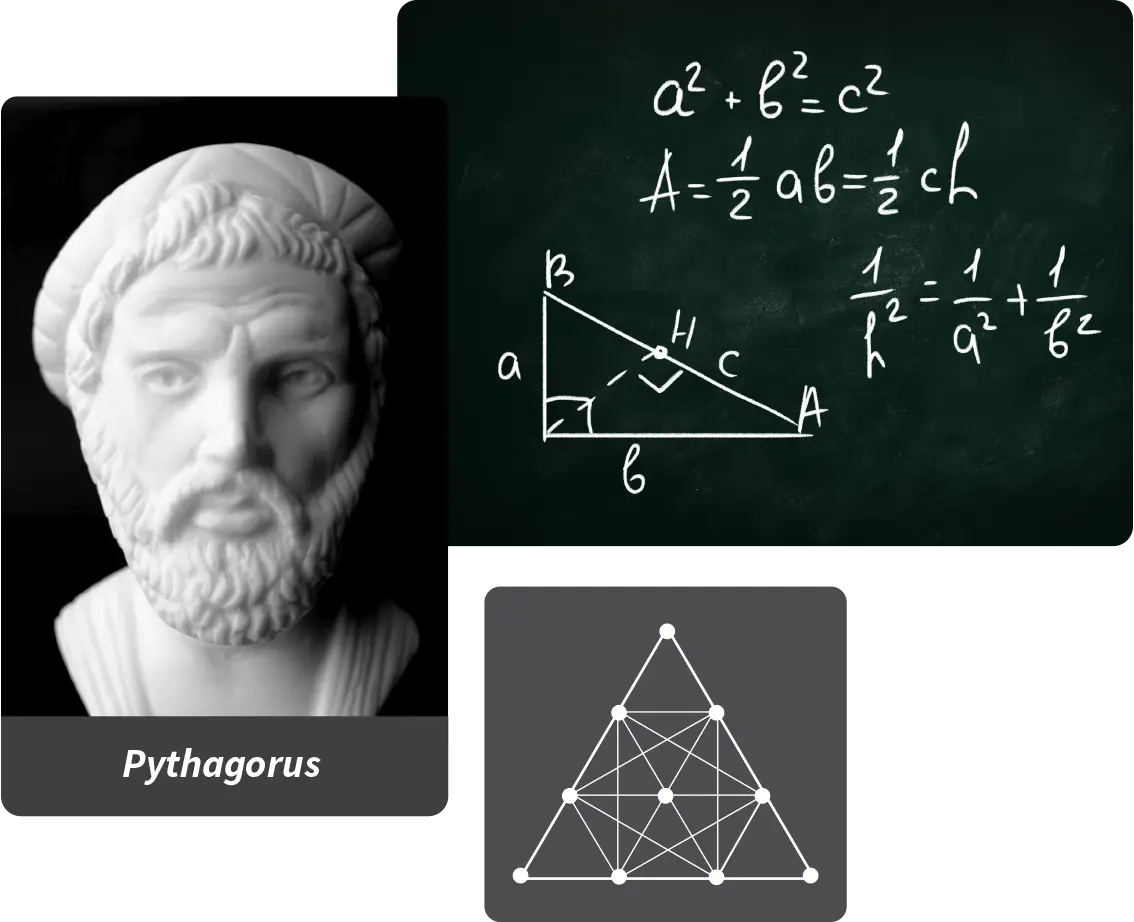
Fragments of the Enneagram symbol can be traced all the way back to classical Greece, where the mathematical patterns of three, seven and nine appear as significant elements in early epics, myths, philosophy and mathematical science - demonstrating the significance this sequence of numbers had in ancient works and thought.
Some authors even argue that variations of the Enneagram symbol can be found in the sacred geometry of Pythagorean mathematicians and mystical mathematics. Pythagoras claims his theory about numbers as the key to understand the creation of the cosmos were from his teachers in Egypt. Russ Hudson has lectured on the origins of the Enneagram about the Egyptian Ennead and how the metaphysical forces and numbers link to the origins of the Enneagram.
The founder of Neoplatonism, Plotinus (c. 204–270 CE), speaks of nine divine qualities that manifest in human nature. His work would later greatly influence Western and Near-Eastern thought through subsequent thinkers such as St. Augustine of Hippo, the Cappadocian/Desert Fathers, St. Thomas Aquinas and Pseudo-Dionysius the Areopagite. Many of the early Vice and Virtues of the Greeks were standardized by the Christian monks into the seven deadly sins which became popular.
This list of sins was directly derived from the work of the 4th-century Christian monk Evagrius Ponticus (c. 345–399 CE), who identified eight Logismoi or 'evil thoughts' or 'demons' that obstruct the spiritual path: gluttony, impurity, avarice, sadness, anger, acedia (sloth), vainglory, and pride. These concepts form a direct lineage to the Passions of the Enneagram.
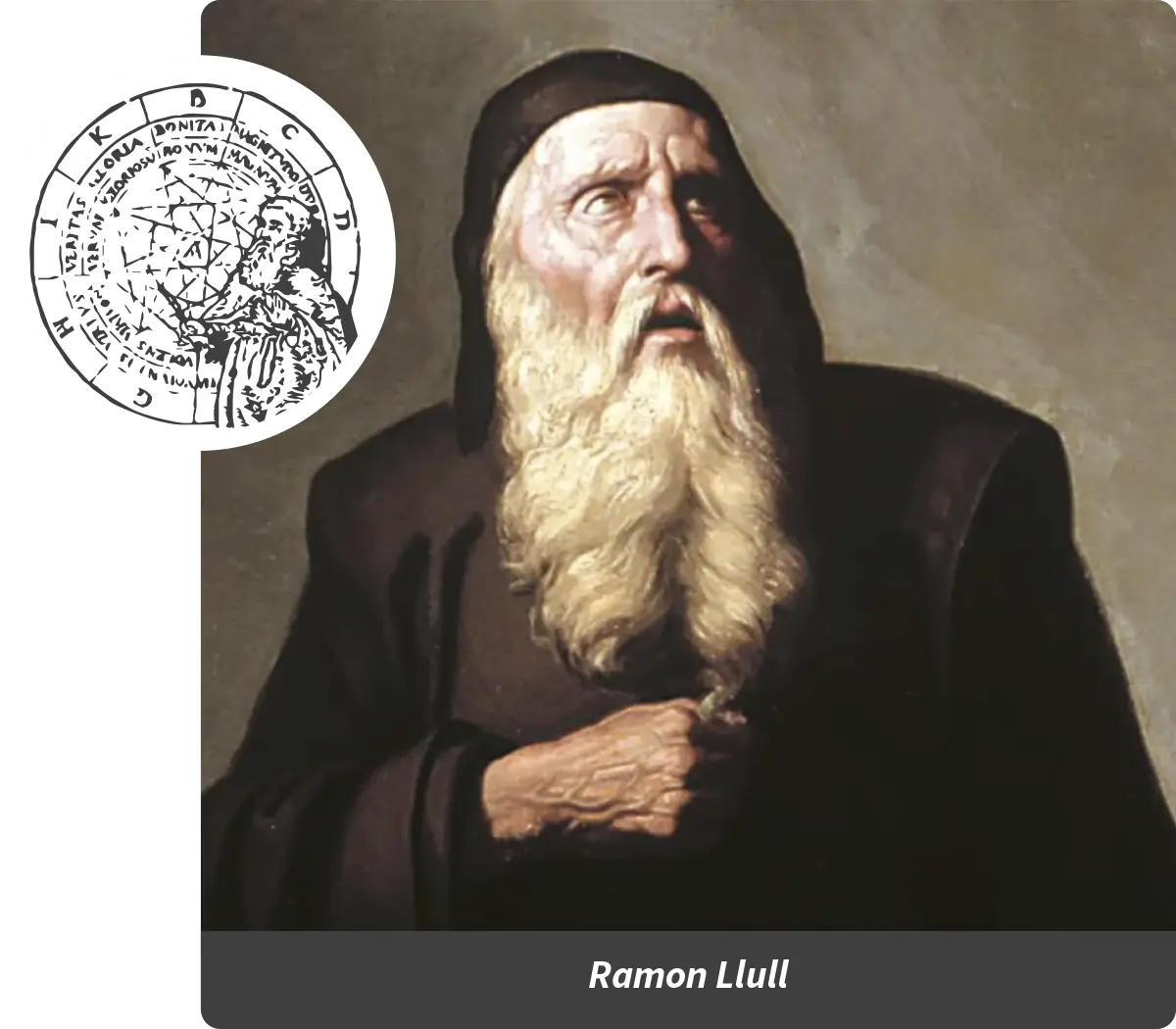
While no direct lineage of the Enneagram symbol has been proven from this period, several important precursors and nine-fold systems appeared:
One of the earliest claimed precursors is found in the work of Catalan philosopher and theologian Ramon Llull.
In his Ars Magna (1305), Llull supposed that there were a number of basic, undeniable truths in all fields of knowledge, and everything could be understood by studying combinations of these elemental truths. He created a diagram of nine sets of aspects in concentric circles, one of which maps to the Vices of the Enneagram.
Other schools and traditions in the same period also reflect early influential ideas including:
It is important for historical accuracy to note that after these medieval threads, there is a gap of nearly 600 years with no known documented use of the Enneagram symbol in its modern form. While esoteric knowledge was often preserved in oral traditions, there is no continuous, verifiable paper trail connecting these early nine-fold systems to the modern emergence of the Enneagram in the 20th century. This makes the work of George Gurdjieff a pivotal, and in many ways, a new beginning for the symbol's story.
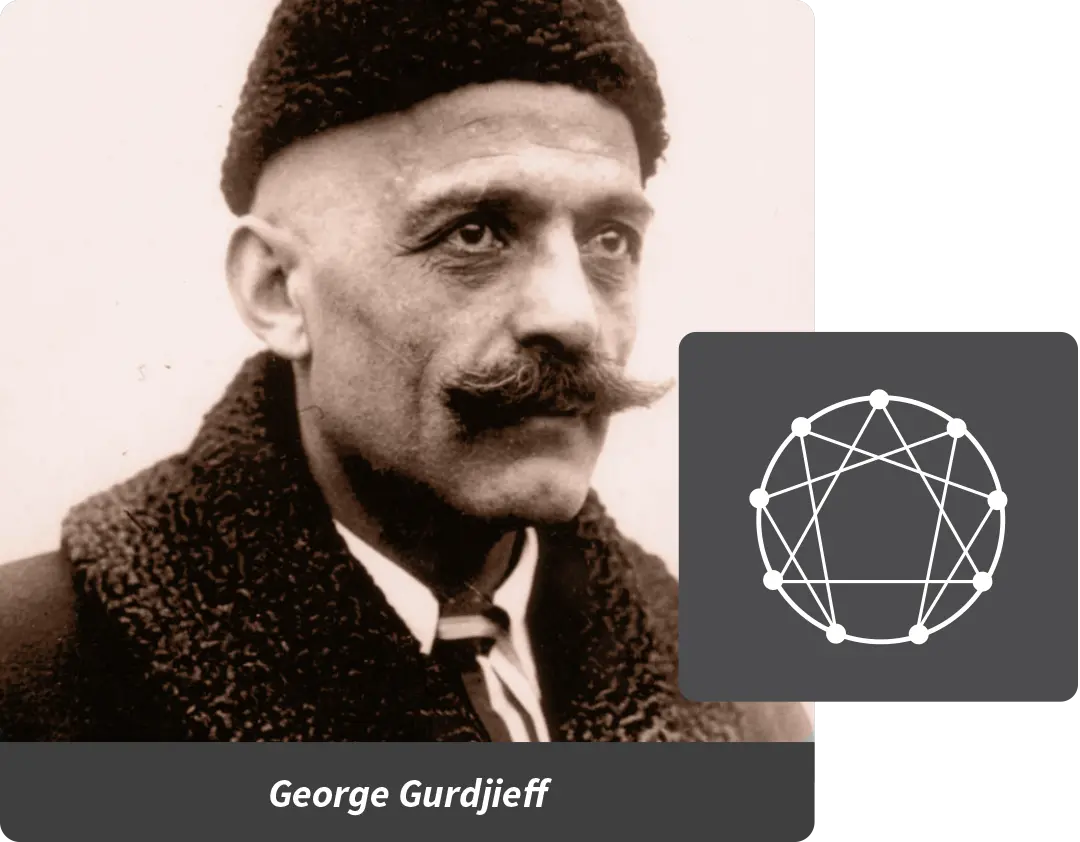
The modern story of the Enneagram begins with the enigmatic Armenian-Greek seeker George Ivanovich Gurdjieff (c. 1866 – 1949). Raised amid the multi-ethnic crossroads of the Caucasus, Gurdjieff spent two decades gathering fragments of esoteric science across Central Asia and the Middle East before blending them with the cutting-edge European psychology of his day—hypnotism, conditioned-reflex theory, and William James’s research on attention. The result was The Fourth Way, a path of transformation designed to be practiced in the midst of ordinary life, rather than in a monastery, ashram, or fakir’s camp.
Between 1914 and 1917, he unveiled a mysterious nine-point star—today’s Enneagram—to private circles in Moscow and St Petersburg. When war closed those groups, he moved west, founding the Institute for the Harmonious Development of Man at the Château du Prieuré near Paris in 1922. For Gurdjieff, the figure was not a typology but a universal process diagram governed by two cosmic principles: the Law of Three (inner triangle: active, receptive, reconciling forces) and the Law of Seven (outer hexad 1-4-2-8-5-7: the pattern of transformation found in musical octaves and psychological change). He stressed the need for conscious “shocks” at key intervals to keep any process—from a business plan to a New Year’s resolution—from drifting off-course.
Crucially, Gurdjieff’s oral teaching contained a psychological map that pre-echoes several pillars of today’s Enneagram of Personality:
While the mainstream view holds that Gurdjieff never taught a system of nine fixed personality types and presented the Enneagram only as a universal algorithm of process, a compelling alternative theory exists. Supported by a close reading of Gurdjieff's allegorical works like Meetings with Remarkable Men, this view suggests he possessed a deep, albeit hidden, understanding of the nine personality structures. In this interpretation, Gurdjieff taught the types not as a public system, but encoded them within his character portraits, reserving the explicit teaching for an inner circle. This would re-frame a later pioneer, Oscar Ichazo, as a pivotal figure who first publicized this hidden stream of knowledge, and Claudio Naranjo as the brilliant synthesizer who translated it for the modern psychological world.
Whether Gurdjieff seeded the raw material or conveyed a complete hidden system, he attributed the symbol’s lineage to the legendary Sarmoung Brotherhood, yet insisted its authority rests on experiment, not myth: “Verify everything in your own laboratory—yourself.”
The monumental leap from Gurdjieff’s dynamic symbol to a formal typology of nine personalities would be made half a century later. This next stage of the journey, pioneered by Oscar Ichazo and Claudio Naranjo, would build upon Gurdjieff’s core insight: that lasting change demands the harmonized engagement of head, heart, and body—the very forces encoded in the Enneagram’s inner triangle.
The journey of the Enneagram into the world of personality began in the 1960s, within the fertile ground of the Human Potential Movement, with the Bolivian-born philosopher Oscar Ichazo. At his Arica School, founded in Chile in 1968, Ichazo was the first to map psychological meaning onto the Enneagram symbol. He taught a system he called Protoanalysis, which connected the nine points to Vices (Passions), Virtues, and ego-fixations. Central to his work was the idea that each person's innate 'Essence' is obscured by an 'Ego' fixation developed in childhood. Ichazo provided the essential spiritual and psychological "skeleton" of the nine types, creating a powerful framework for self-realization.
The rich personality descriptions we use today were then developed by the Chilean psychiatrist Claudio Naranjo. After studying with Ichazo, Naranjo took this psychological 'skeleton' and began a monumental synthesis. He integrated Ichazo's framework with his own extensive background in Gestalt therapy, psychoanalysis, and academic psychology to create the detailed portraits of the nine personality types. Building on the 27 subtype keys originally mapped by Ichazo, Naranjo was the one who developed them into the rich psychological 27 Subtype Character profiles we use today. A key part of Naranjo's teaching method, developed in his SAT (Seekers After Truth) groups, was the pioneering use of live interview panels to vividly demonstrate the character of each type. Naranjo always acknowledged that the Protoanalysis "skeleton" came from Ichazo, but it was his own synthesis that created the Enneagram of Personality. This distinction, and a complex personal and philosophical break between the two men following the 1970-71 Arica training, is what led Naranjo to teach his version independently, which became the source for the modern Enneagram movement. This immense contribution to the Enneagram was not an isolated academic exercise, but an integral part of Naranjo's own lifelong spiritual pilgrimage, which he documents in his autobiography, 'Up and Down the Holy Mountain.'
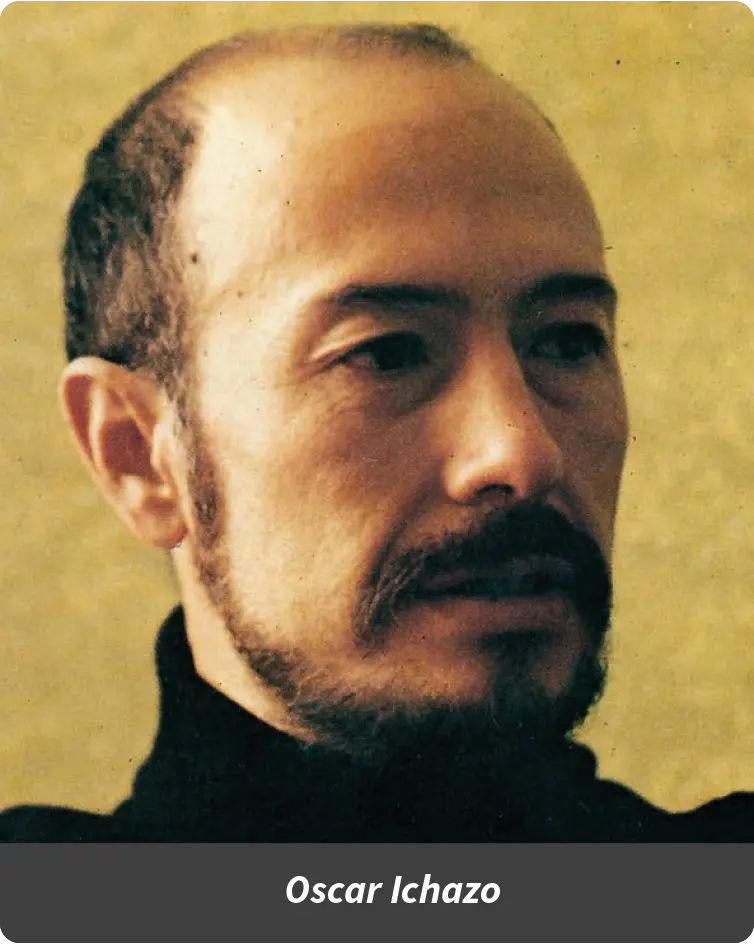
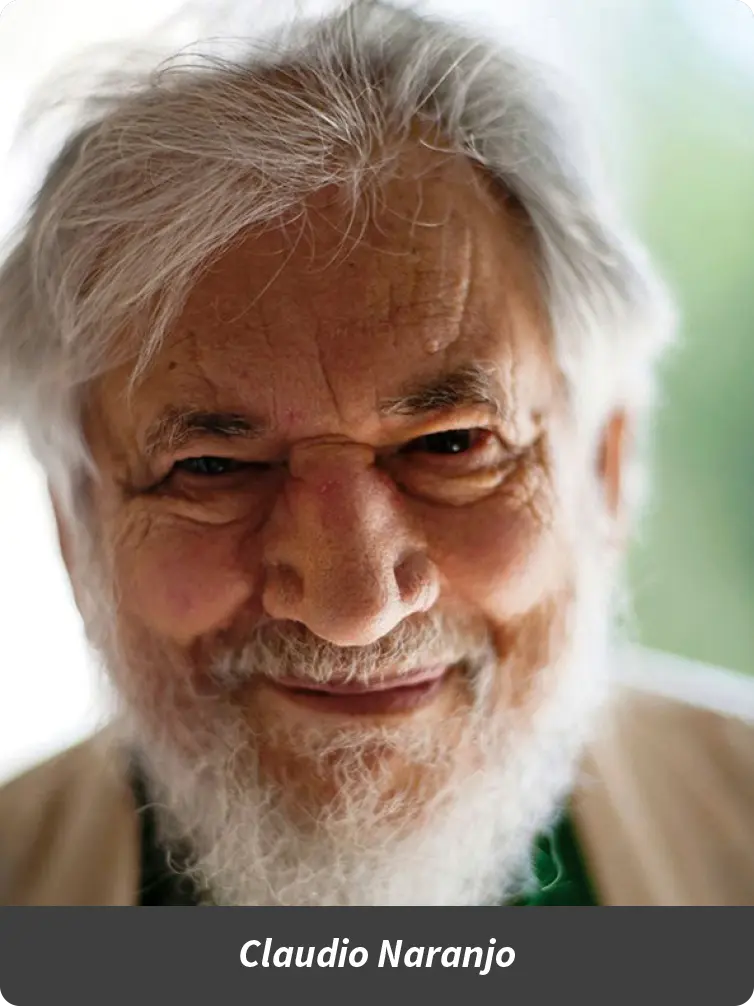
Some Christian critics have recently raised concern about the origins of the Enneagram of personality. This is simply the result of misinterpretation, however. During an interview with Claudio Naranjo, he stated that his process of creating the Enneagram involved using "enhanced states of consciousness" and "automatic writing" - techniques that some have tried to argue involve the "channelling of potentially demonic spirits".
Below I briefly outline the events that led up to Naranjo's creation of the nine Enneagram types and 27 subtypes, demonstrating that he was clearly an expert in the fields of psychology, psychometrics and personality. I hope to provide some clarity into exactly what was meant by the terms 'automatic writing' and 'enhanced states of consciousness' - with the aim of putting to ease any apprehension that some might have had over this brilliant man and his work.
Naranjo, in his public speeches, referred to Oscar Ichazo as the father of the Enneagram and himself as the mother. He further explained that he got the original seed ideas from Oscar and that he fleshed out the rest himself. Although George Gurdjieff introduced the Enneagram diagram (the lines of the triangle and the concept of the 142857 number sequence) to the public in 1923, it was Oscar that was the first to connect the nine vices, virtues, holy ideas and the 27 subtype keys to the Enneagram diagram - an idea that he saw in a similar diagram of Ramon Llull's Ars Magna (1305). It is not entirely clear what else Ichazo gave Naranjo, but the focus here will to follow the thread of the further developments made by Naranjo.
Let's take a quick dive into Naranjo's extensive background and qualifications in the field of psychology and psychiatry, meditation and mindfulness - as well as his knowledge of a wide array of teachings of different spiritual and philosophical traditions.
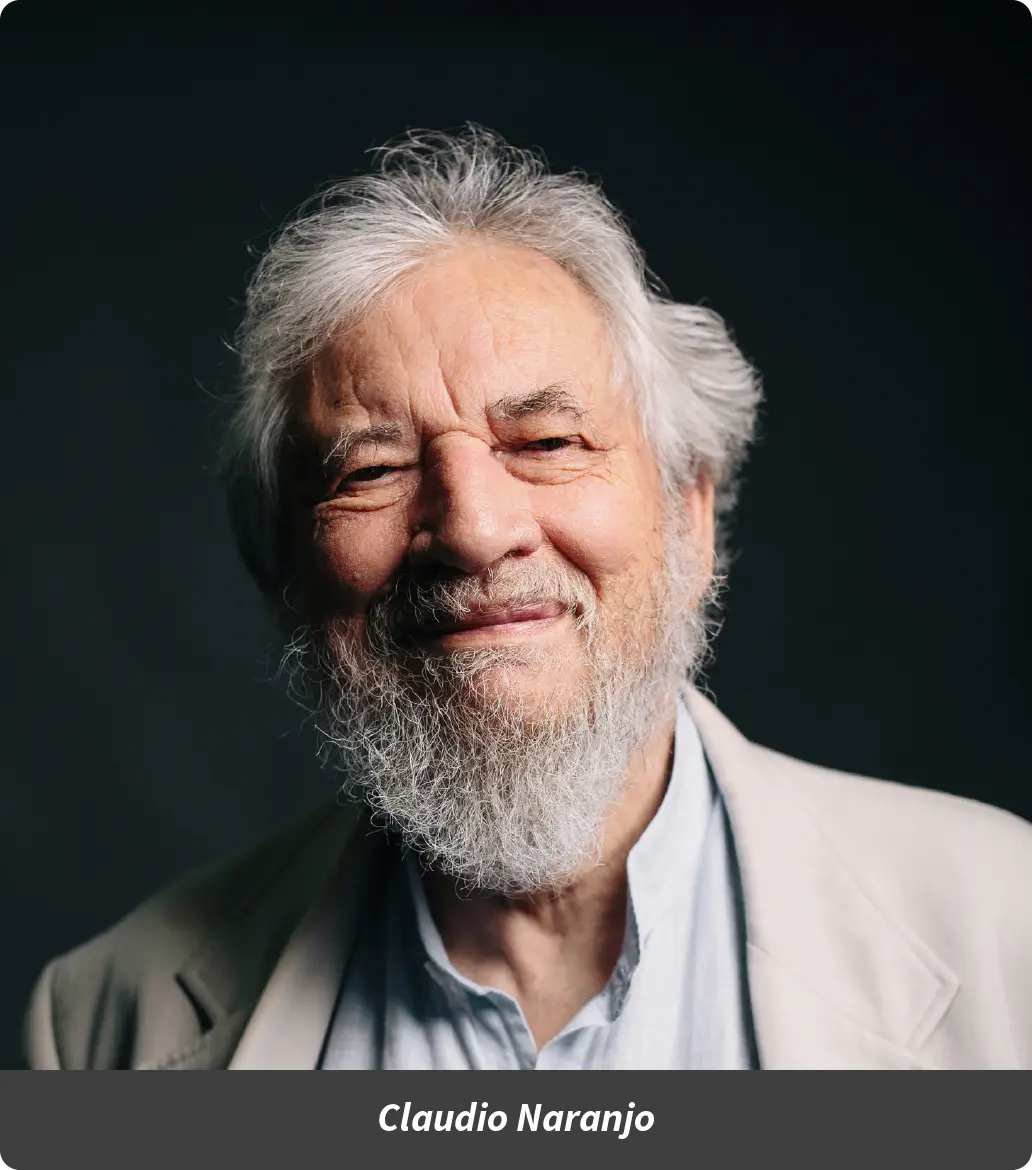
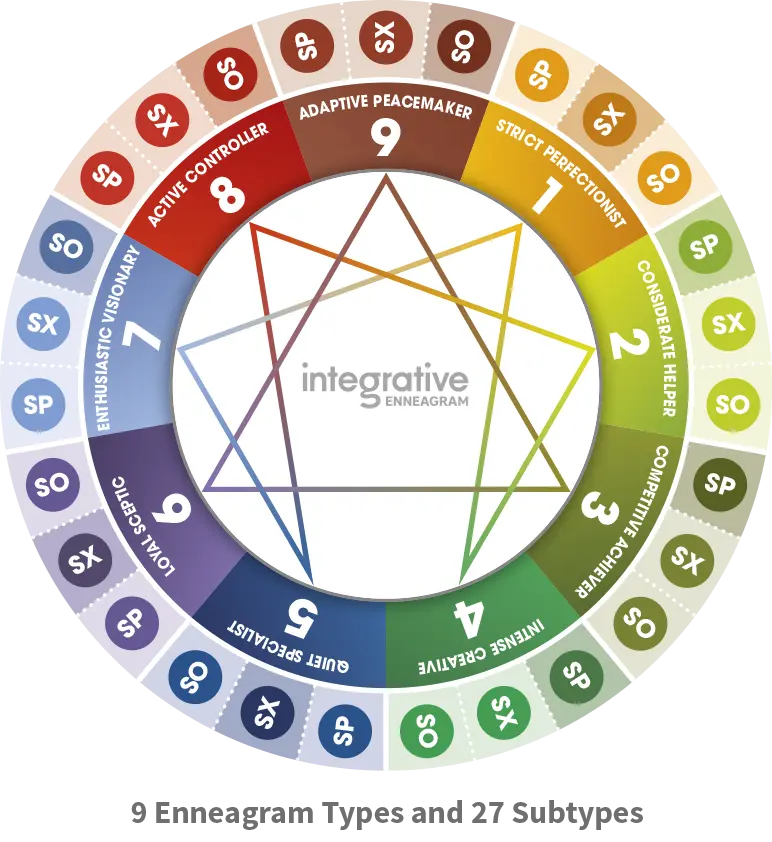
Dr. Claudio Naranjo was not a mystic operating outside of established fields; he was a PhD-qualified medical doctor, researcher, and clinical psychiatrist deeply embedded in the scientific community. He collaborated with pioneers in psychometrics like Raymond Cattell (developer of trait factor analysis) and personality theory like Gordon Allport. As a key figure at the Esalen Institute and an apprentice to Gestalt therapy founder Fritz Perls, he was at the epicenter of the Human Potential Movement.
In his public speeches and teachings, Naranjo often referred to Oscar Ichazo as the 'father' of the personality Enneagram and himself as the 'mother.'
Given this background, Naranjo's description of his process can be understood in its proper context. He described using "enhanced states of consciousness" and "automatic writing" to develop the detailed type descriptions.
In essence, Naranjo's ground-breaking contribution was using his disciplined mind to enter a state of profound creative flow, allowing him to synthesize Ichazo's esoteric skeleton with his own vast clinical and psychological knowledge into the comprehensive and practical Enneagram of Personality system we use today.

A pivotal moment in the modern history of the Enneagram was the first International Enneagram Conference, held at Stanford University in 1994. This landmark event was initiated by Dr. David Daniels, who was a Clinical Professor of Psychiatry at Stanford University Medical School at the time. He and Helen Palmer served as co-directors of the conference, which marked a new level of recognition for the Enneagram as an accepted and reliable personality system.
Psychologists, spiritual teachers, coaches, and business professionals from around the world came together to share research and exchange ideas. The conference famously utilized live interview panels where individuals of each type shared their personal experiences. This “Narrative Tradition” approach, championed by Palmer and Daniels, was central to the event and instrumental in bringing the Enneagram to a wider public audience. In addition to his role with the conference, Dr. Daniels also developed the Stanford Enneagram Discovery Inventory, an early and influential form of self-typing based on nine descriptive paragraphs.
The event’s success inspired a group of its presenters and teachers to found the International Enneagram Association (IEA). The IEA Founders included Maria Beesing, David Daniels, Theodorre Donson, Andreas Ebert, Russ Hudson, Jerry Wagner, Kathy Hurley, Patrick O'Leary, Helen Palmer, and Don Riso.
We also acknowledge contemporary theorists and developers of the field: Mark Bodnarczuk, Sandra Maitri, AH Almaas (Holy Ideas), Beatrice Chestnut, Dirk Cloete, Ginger Lapid-Bogda, Katherine Fauvre, Mario Sikora, Russ Hudson, Don Riso, Uranio Paes, Ian Morgan Cron, and many more. Through their books, podcasts, and teachings, these figures have been instrumental in bringing the Enneagram to a new generation of seekers and professionals.

The Integrative Enneagram Questionnaire is a dynamically adaptive intelligent assessment. It will take you about 30 minutes to complete and it will measure: Enneagram Profile, 27 Subtypes, Centers, Wings, Lines, Levels of Integration and 6 dimensions of Strain.
Get Your Type